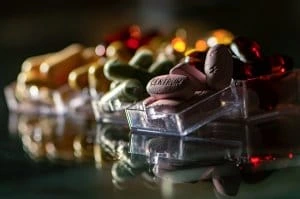Green Deal Call exposures to industrial chemicals and pharmaceuticals
Why use microfluidics for the Green Deal Call?
- Lab-on-chip for fast and sensitive detection of pharmaceuticals and chemicals
- Organ-on-chip to study the effect of chronic exposure to pollutants
- Portable devices for on-site analysis

Fostering regulatory science to address combined exposures to industrial chemicals and pharmaceuticals
What can microfluidics do against exposures to industrial chemicals and pharmaceuticals?
The use of microfluidics is perfectly in the scope of the call LC-GD-8-2-2020 and is particularly relevant for the two following objectives:
- To develop innovative tools and analytical methods to detect and measure complex mixtures in the various environmental compartments;
⇒ Lab-on-chips are innovative microfluidic devices that allow the quick and precise analysis of low-volume samples. Their small size makes them portable and ideal for on-site analysis.
- To study the possible effects on humans, in particular on vulnerable sub-populations, from combined (chronic) exposure to low levels of pharmaceuticals via the environment, taking into account the inherent pharmacological properties and the potential for combined effects from co-exposures with other chemicals;
⇒ Organ-on-chip are animal-free models that accurately mimic body barriers, allowing precise control of the microenvironment of the cells. They would be particularly useful to study the effect of chronic pharmaceutical exposure on health.
What cab the MIC do for your Green Deal project?
For the call LC-GD-8-2-2020, the MIC will use its microfluidic expertise to support your project and help you develop the microfluidic setup you need to meet EU expectations.
More specifically, we can:
- Design innovative instruments for the perfusion of your microfluidic lab-on-chip;
- Automate certain tasks that you would normally do repeatedly in your microfluidic device, like cell seeding or reagent injection and mixing;
- Participate in the development of an easy-to-use organ-on-chip platform accessible to non-specialists.
The MIC already brought its microfluidics expertise into many research projects:
H2020-NMBP-TR-IND-2020

Microfluidic platform to study the interaction of cancer cells with lymphatic tissue
H2020-LC-GD-2020-3

Toxicology assessment of pharmaceutical products on a placenta-on-chip model
